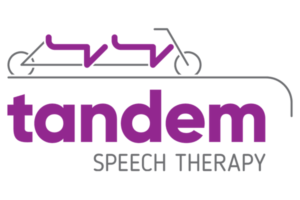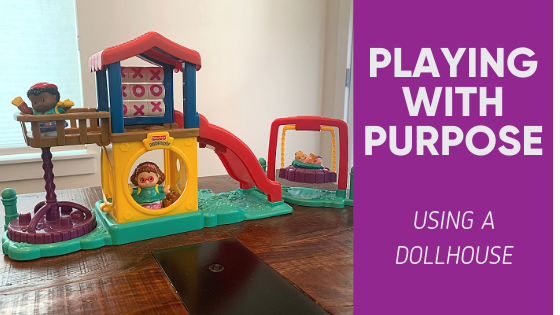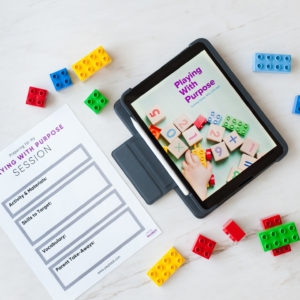When I pack up my car to see kids for speech therapy in Austin, TX, I am always looking for the most bang for my buck. Each week, I try to pick one toy or activity that I can use with all, or almost all, of my clients. This means the toy needs to be versatile and engaging for many types of children at different stages of their speech and language development.
Enter the dollhouse or a playhouse. Now, folks, this toy is for ALL kids…and I mean ALL kids. Gone are the days of only buying your daughter a dollhouse for her birthday. Playhouses come in many shapes and sizes. They come branded with your child’s favorite character whether it be Barbie, Paw Patrol, or the X-Men. And on top of that, a dollhouse can be used to support children beyond their speech and language growth. The house is an excellent catalyst for working on fine motor skills, building creativity, developing play skills, and enhancing social skills.
If you’re looking for a gift or to add to your therapy bag, these are my 2 favorite dollhouse choices!
They are extra portable and fold-up for easy storage.
Top 5 Tips for Playing With Purpose Using a Dollhouse:
- Practice sorting the pieces of the house into groups or categories. For children who are concrete-thinkers, this is a good place to begin. Have the child you are working with sort the furniture into the correct room of the house or sort by function. For example, “get all the things we could sit on.” If the child does not need a tangible item, give them a category and have then name items that belong to it. You could the child name rooms of the house, furniture, things that belong in the kitchen, family members, etc. In this case, the playhouse would serve as a visual reference.
- Help a child expand their mean length of utterance (MLU) while engaging in pretend play using the dollhouse. MLU refers to how long a phrase or sentences is–how many words the child is putting together. If a child is at the single-word level then we can support them in producing two-word phrases with modeling. For example, your child may have a vocabulary of many nouns or object words. This is great for a dollhouse that has rooms and pieces. You may hear things such as chair, bed, mama, baby, and light. Each time you hear your child use their noun words, add one more word and model a phrase. You could say, “sit chair,” “sleep bed,” or “mama eat.”
- Your dollhouse provides an awesome canvas for working on following directions, especially ones that contain prepositions. Prepositions are also called location words–in, on, above, below, next to, etc. Give directions that incorporate the people and furniture or items from the dollhouse. If the child is having trouble following your commands then try pointing to give them an extra visual cue. You could say, “Put the brother in front of the bathtub,” or “give mom the apple and sit her on the sofa upstairs.”
- Use two dolls to practice and demonstrate social skills. For older children working on conversation skills, the dolls can talk to each other with a social script. Once the script is familiar you can work on carrying over the conversation to structured settings. For younger kids, you can model social routines like turn-taking. Perhaps the two dolls need to take turns with a toy or your set only has one car so 2 children need to practice taking turns playing with it.
- Dollhouses are wonderful for practicing pretend play skills! Did you know that pretend play emerges in toddlers at 18-24 months?! Children can act out the activities that they see every day, such as going to bed or taking a bath. You can also pretend to cook dinner, sit at the table to eat, or watch television. You can model the actions first and then prompt your child to imitate the actions. As always, be sure you use lots of language during play so your child hears vocabulary in context.
It’s really important that when we choose toys for children that we pick toys where the child is doing the work–not the toy. A dollhouse is a perfect choice ripe with opportunities for creativity to blossom and speech and language skills to grow.
Need help choosing toys for your child or speech therapy clients?
Start Playing With Purpose
Learn how to purposefully and intentionally interact with your child during play and help them increase opportunities for speech and language development with our Playing with Purpose book!












